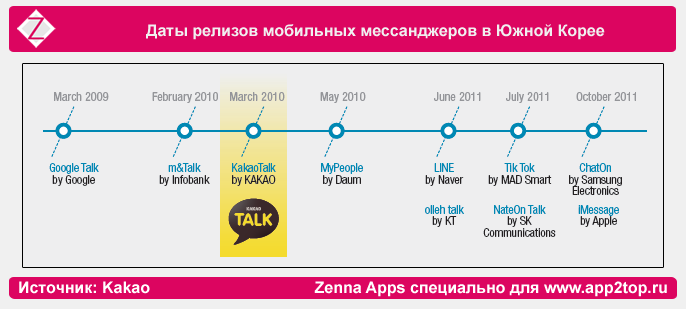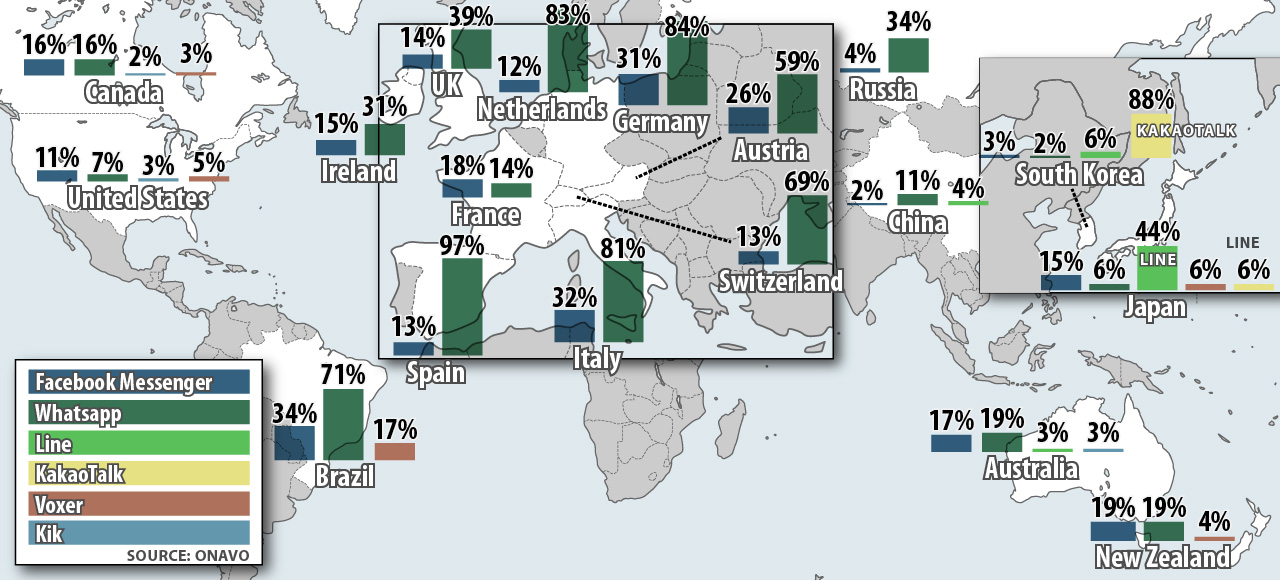All about KakaoTalk (part one)
The founder and CEO of Zenna Apps Inna Zaichenko wrote a huge material specifically for App2Top about what is the most popular KakaoTalk messenger in South Korea. In the first part, Inna shared a brief history of the service.
Pioneer
“Katalk me” is exactly what they say in Korea now instead of the usual “SMS came”. Reminds me of Google, doesn’t it? Katalk – short for KakaoTalk – has recently become a common expression.
KakaoTalk, which appeared on mobile shelves in March 2010, turned out to be the first messenger developed by a Korean team. This turned out to be one of the main success factors, nationality allowed the application to successfully compete with Google Talk and m&Talk from Infobank already present on the market.
In 2011, when the twin brother LINE appeared from the Japanese division of the Korean Naver, KakaoTalk held the position of leader thanks to a wider functionality. It automatically registered friends using the phone’s contact list and showing unregistered possible friends.
The Korean startup dealt with WhatsApp, which has become more active in the Asian markets, even more simply: pricing policy. Unlike its Western competitor, KakaoTalk has always been free.
The formula for success
When the company was founded, its management defined Kakao’s mission as “to grow together for the better” (meaning, to grow together with partners). We decided to make the main features of the product: high loyalty to the user, direct socialization and the presence of games – the main entertainment element.
Thus, Kakao’s success formula now includes a set of facts and emotions: loyalty + socialization tools + games
Loyalty
It is best to talk about loyalty using the example of the “100 Improvements” initiative launched in 2011. Within its framework, Kakao accepted suggestions and concepts from its users to improve the service. Based on the collected 60 thousand ideas, Kakao selected the 100 best and brought them to life. KakaoStory, which is very popular today, has become one of such concepts. She, in turn, implements the “social” approach.
Sociality
KakaoStory service is very similar to Facebook. This is a photomicroblogging application that allows users to share news, photos and find mutual acquaintances. The main difference is its closeness. The KakaoStory microblog is visible only to friends (only someone who is in the KakaoTalk contact list can become a friend). In the first year of its existence alone (the lunch was held in March 2012), more than 1 billion posts were published, and 32.5 million users installed the application.
Gaming platform
In 2012, Kakao took another step towards success: it implemented the gaming part of the formula, releasing the KAKAO Game Platform in June. At that time, the application already had 82 million installations on iOS and Android, the DAU was 30 million.
The introduction of the gaming service has become an additional driver in increasing the user base. As of the end of October this year, KakaoTalk has 110 million users.
Most of them are Koreans, despite the fact that the Kakao app supports 13 languages and is available in 230 countries.
However, now the situation is slowly changing: the messenger is slowly beginning to conquer foreign markets. The most active growth is observed in Indonesia, the Philippines and Malaysia.
(to be continued)In the second part, Inna will talk about how Kakao works with mobile game developers.




